Packages and interfaces are two of Java's most innovative features. Packages are used to group related classes and avoid naming conflicts by providing a mechanism to partition the class namespace into more manageable chunks. Packages also provide access control, with protected and default members having package-level access. To define a package, the package statement is included at the top of a Java file specifying the package name. Import statements are used to make classes in other packages visible. Packages can be built-in, from the Java API, or user-defined.
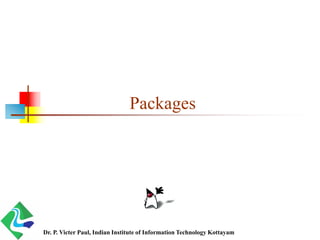
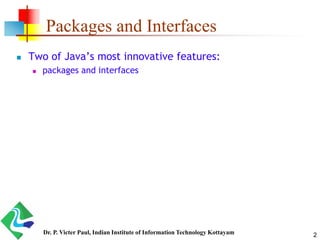
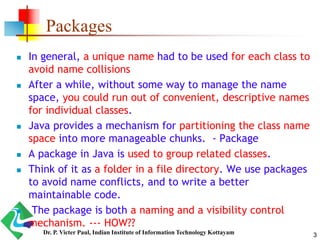
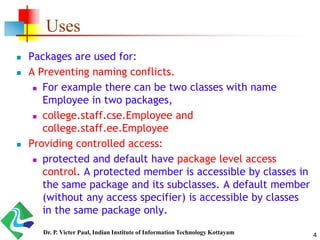

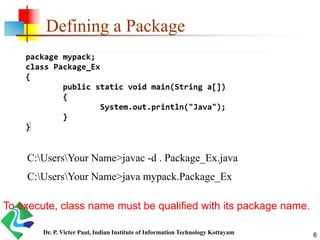


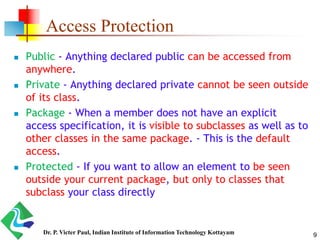
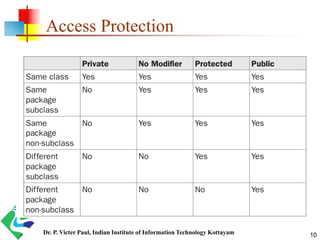
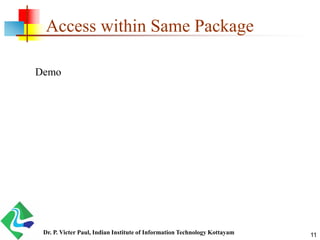
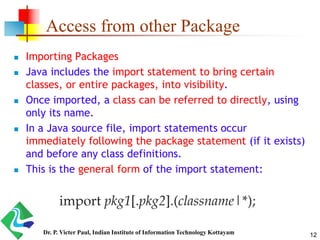
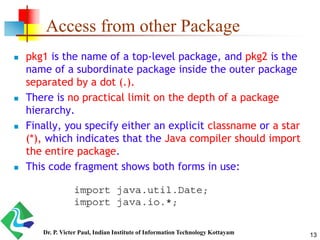
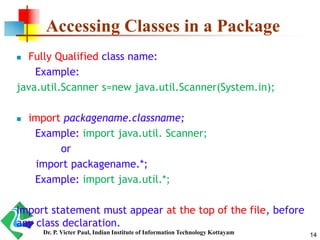
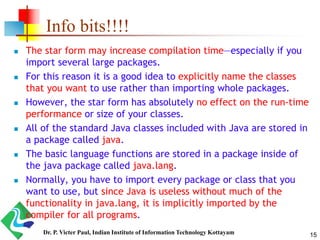
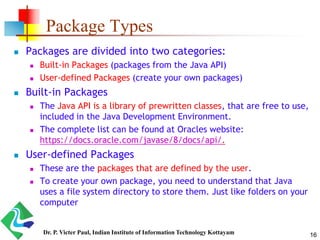

![Example1-Package
package p1;
public class ClassA
{
public void displayA( )
{
System.out.println(“Class A”);
}
}
import p1.*;
Class testclass
{
public static void main(String str[])
{
ClassA obA=new ClassA();
obA.displayA();
}
}
18Dr. P. Victer Paul, Indian Institute of Information Technology Kottayam](https://image.slidesharecdn.com/java-packagesconcepts-200510152446/85/Java-Packages-Concepts-18-320.jpg)
![Example2-Package
package p2;
public class ClassB
{
protected int m =10;
public void displayB()
{
System.out.println(“Class B”);
System.out.println(“m= “+m);
}
}
import p1.*;
import p2.*;
class PackageTest2
{
public static void main(String str[])
{
ClassA obA=new ClassA();
Classb obB=new ClassB();
obA.displayA();
obB.displayB();
}
}
19Dr. P. Victer Paul, Indian Institute of Information Technology Kottayam](https://image.slidesharecdn.com/java-packagesconcepts-200510152446/85/Java-Packages-Concepts-19-320.jpg)
![Example 3- Package
import p2.ClassB;
class ClassC extends ClassB
{
int n=20;
void displayC()
{
System.out.println(“Class C”);
System.out.println(“m= “+m);
System.out.println(“n= “+n);
}
}
class PackageTest3
{
public static void main(String args[])
{
ClassC obC = new ClassC();
obC.displayB();
obC.displayC();
}
}
20Dr. P. Victer Paul, Indian Institute of Information Technology Kottayam](https://image.slidesharecdn.com/java-packagesconcepts-200510152446/85/Java-Packages-Concepts-20-320.jpg)
